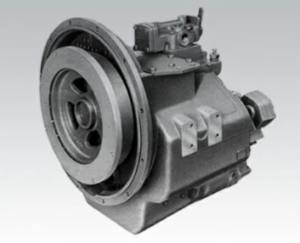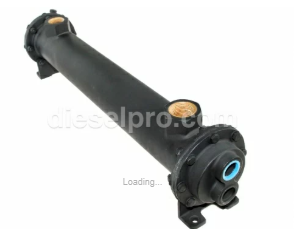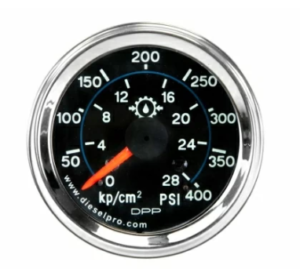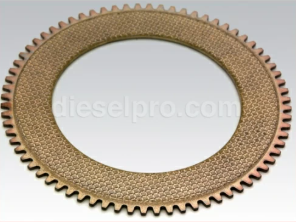

Parts Catalog for Twin Disc MG5091 Marine Transmissions
Rebuilt Twin Disc MG5091 Marine Transmissions
Plate Kit For Twin Disc MG5091 Marine Transmission
Gasket Kits For Twin Disc MG5091 Marine Transmission
The Twin Disc MG-5091 Marine Gear is engineered for continuous-duty commercial marine operations, combining hydraulic clutch engagement with planetary reduction gearing to deliver reliable performance under demanding conditions. Whether your vessel is pushing barges upriver, maneuvering fishing nets offshore, or operating around the clock in harbor pilot service, proper operation of this marine transmission is essential to ensure reliability, maximize lifespan, and avoid premature wear or failure.
This guide covers all the vital procedures and recommendations to safely operate your MG-5091, including startup checklists, oil and filter inspections, and ongoing monitoring of gauges and critical operating parameters such as temperature, oil pressure, and vibration.
Even the most well-built marine transmission can suffer damage from neglect or improper use. That’s why these operating instructions are based on real-world marine industry best practices—so you can protect your equipment and your mission at sea.
Startup Checklist for Twin Disc MG-5091 Marine Gear
Before every engine start, a consistent pre-operation checklist should be followed. This ensures the MG-5091 is properly lubricated, free of any restrictions, and ready for load-bearing operations.
Failure to complete basic checks can result in overheating, pressure loss, or severe internal damage within minutes of startup.
Here is the complete startup checklist.
1. Oil Level Check
Why It Matters:
The MG-5091 is a hydraulically operated marine transmission. The transmission oil not only lubricates moving components but also actuates the clutch packs and controls cooling through the oil circulation system. Running the unit with low oil can lead to:
- Clutch burn
- Pressure loss
- Gear wear
- Seal failure
How to Check the Oil Level:
- Ensure engine is off and transmission has cooled.
- Locate the dipstick or sight glass (typically on the top or side of the gear housing).
- Remove dipstick and wipe clean.
- Reinsert fully and remove again to read level.
- Confirm that the level is between the FULL and ADD marks.
- If low, top off with the recommended oil type (typically SAE 30 or 40 non-detergent, depending on ambient temperature and OEM recommendation).
Always refer to the oil spec listed on the ID tag or consult Diesel Pro for compatibility with your operating environment.
2. Filter Inspection

Why It Matters:
The MG-5091 uses an oil filter or screen to remove debris and protect internal hydraulic passages. If clogged, oil pressure can drop, causing erratic clutch engagement and overheating.
What to Inspect:
- Suction screen inside the housing (if accessible)
- Inline or canister filter (on some models)
- Oil cooler lines for flow restrictions
Procedure:
- Check filter indicator (if equipped) for clog warning.
- Inspect external filter housing for leaks or dents.
- Replace the oil filter every 250–500 hours, or as required by oil analysis.
If debris is found, inspect magnetic drain plugs for metal particles. This may indicate gear or bearing wear inside the unit.
3. Monitoring Gauges
The transmission must be monitored during startup and operation using onboard gauge panels or digital readouts, depending on your vessel’s configuration. Gauges should be checked both at idle and under load.
Primary Gauges to Monitor:
- Oil Pressure Gauge
- Oil Temperature Gauge
- Transmission RPM (if separate from engine RPM)
Acceptable Idle Readings:
- Oil Pressure: 40–60 psi
- Oil Temperature: Ambient +10–15°F
- No abnormal vibration or noise
Always let the engine warm up before engaging the clutch into forward or reverse. Cold fluid can cause high-pressure spikes or sluggish engagement.
Operating Parameters for Twin Disc MG-5091 Marine Gear
Knowing the normal performance window for temperature, pressure, and mechanical noise is crucial. Deviations from these parameters are early signs of problems and can often prevent failure if addressed quickly.
Below is a complete breakdown of normal operating ranges and warning signs.
Normal Operating Temperature
Temperature is one of the most important factors affecting transmission life. Excessive heat causes oil breakdown, clutch plate warping, and accelerated seal wear.
Target Operating Temperatures:
- Normal Load: 140°F to 180°F (60°C to 82°C)
- Heavy Load: Up to 195°F (91°C)
- Maximum Allowed: 205°F (96°C)
Temperatures exceeding 205°F indicate cooling system problems or clutch slippage.
Monitoring Tips:
- Check temp after 15–30 minutes of full-load operation.
- Monitor during rapid maneuvering (e.g., docking, trawling, towing).
- Use an infrared thermometer to verify gauge accuracy.
Oil Pressure Ranges

Oil pressure powers the hydraulic clutches and lubricates all rotating components. Low pressure causes delayed engagement, slippage, and catastrophic failure.
Normal Pressure Ranges:
- Idle Pressure (Neutral): 40–60 psi
- Engaged Gear (Loaded): 120–250 psi
- Shift Engagement Spike: May briefly rise to 280–300 psi
Pressure Loss May Be Caused By:
- Clogged filter
- Low oil level
- Pump wear
- Internal leakage or cracked housing
- High fluid temperature (thinner oil)
Pro Tip: Install a mechanical gauge with a pressure port near the control valve body for accurate testing.
If oil pressure drops during operation, disengage the gear and shut down the engine immediately to avoid clutch damage.
Noise and Vibration Limits
All marine transmissions generate some noise, especially during engagement and under heavy load. However, any unusual or increasing noise level should be investigated immediately.
Acceptable Noise Levels:
- Idle (Neutral): Quiet with minor gear mesh hum
- Engagement: Smooth click or “thunk” from clutch pack
- Operating Load: Consistent hum with no screeching, whine, or metallic rattling
Warning Sounds:
- Grinding or screeching: May indicate clutch or bearing failure
- Whining: Often linked to cavitation in oil or pump wear
- Rattling: Could be loose bolts or coupling misalignment
Acceptable Vibration:
- Shaft RPM < 3000: Minimal to no vibration
- TIR (Total Indicated Runout) at output flange: ≤ 0.002″
- High vibration may point to:
- Shaft misalignment
- Bent shaft or flange
- Failed engine mounts
- Damaged coupling
Use vibration analysis tools if operating a fleet or vessel in 24/7 service. This helps detect early bearing failure or gear wear before breakdown occurs.
Safe Gear Engagement and Shifting Tips
While the MG-5091 is built to handle continuous forward and reverse cycling, improper gear shifting can damage the internal clutch pack or create unsafe conditions.
Proper Shifting Technique:
- Allow the engine to reach normal operating temperature before engaging gear.
- Ensure the throttle is at idle when shifting.
- Engage gear using gradual and smooth lever motion.
- Wait for the clutch to fully engage before increasing throttle.
Abrupt shifting or revving the engine while shifting can cause clutch pack slippage and uneven wear.
Shifting While Underway:
If reversing thrust while the vessel is still moving forward (e.g., docking):
- Always allow a brief pause in neutral before reversing.
- Do not shift while above 1,000 engine RPM.
- Excessive forward-to-reverse shifting (as in trawling) requires frequent clutch inspection.
Shift Delay or Sluggish Engagement?
Common causes include:
- Low or cold oil
- Dirty filter
- Worn clutches
- Faulty solenoid or control valve
Do not attempt to “force” gear engagement with throttle — identify and resolve the issue before proceeding.
Shutdown and Post-Run Procedures
Proper shutdown ensures the MG-5091 cools evenly and remains ready for the next startup.
End-of-Day Checklist:
- Allow engine to run in neutral for 2–5 minutes before shutdown to cool oil.
- Place gear in neutral before turning off engine.
- Check for leaks or drips under gearbox and oil cooler lines.
- Inspect control cables or hydraulic lines for looseness or chafing.
- Record hour meter reading and any abnormal events in a logbook.
If gear oil is unusually hot at shutdown, perform a cooling system inspection and check transmission logs for pressure fluctuations or temperature spikes.
Troubleshooting Operating Irregularities

1. Slipping in Forward or Reverse:
Possible Causes:
- Worn or contaminated clutch discs
- Low oil level or pressure
- Internal seal leakage
- Incorrect oil type
Corrective Action:
- Check oil level and condition
- Inspect hydraulic pressure
- Schedule clutch inspection
2. No Gear Engagement:
Possible Causes:
- Faulty control valve or cable linkage
- Air in hydraulic system
- Broken clutch piston ring or internal fault
Corrective Action:
- Test shift control response
- Check hydraulic actuation pressure
- Drain and refill with proper oil if aeration suspected
3. Abnormal Noise When Loaded:
Possible Causes:
- Gear tooth damage
- Coupling misalignment
- Insufficient oil or pressure
Corrective Action:
- Shut down and inspect output coupling
- Check shaft alignment and runout
- Test for pressure drop under load
Best Practices for Prolonging MG-5091 Operating Life
To ensure thousands of hours of reliable service from your MG-5091, follow these best practices daily:
- Use high-quality transmission oil: Consult your operating temperature and ambient conditions.
- Change oil regularly: Typical interval is every 250–500 hours.
- Inspect oil cooler lines for blockage, especially in saltwater service.
- Log every operating hour and record oil pressure and temperature.
- Avoid “riding” the clutch: Only engage when movement is needed.
- Align engine and shaft every time transmission is removed or replaced.
- Perform regular vibration checks to catch issues early.
With diligent operation and routine monitoring, the MG-5091 can easily exceed 20,000 service hours in commercial use.
Summary
Operating Instructions for Twin Disc MG-5091 Marine Gear
Safe and efficient operation of the Twin Disc MG-5091 Marine Gear depends on discipline, observation, and adherence to technical procedures. Whether starting up for a day’s work or pushing through a week of heavy-duty commercial use, knowing the right temperature, pressure, and engagement practices protects your vessel from downtime.
Daily Operating Essentials:
- ✅ Check oil level and condition before each start
- ✅ Inspect filters and cooling lines weekly
- ✅ Monitor pressure and temperature every hour
- ✅ Shift smoothly, avoid high-RPM transitions
- ✅ Log performance data to catch trends
- ✅ Investigate vibration and noise immediately
Your transmission is only as reliable as your commitment to operating it correctly. When operated properly, the MG-5091 delivers the performance and endurance Twin Disc is known for.

Rebuilt Twin Disc MG5091 Marine Transmissions
Plate Kit For Twin Disc MG5091 Marine Transmission
Gasket Kits For Twin Disc MG5091 Marine Transmission
Videos About Twin Disc Transmissions
6 Reasons Your Twin Disc Transmission Has Low Oil Pressure
7 Reasons Your Twin Disc Transmission Is Overheating
3 Reasons Your Clutch Plates in Your Twin Disc Transmission Are Making Excessive Noise
Bull Gear On A Twin Disc Transmission
Rebuilt Twin Disc Transmissions



 Free US Calls: 1-888-433-4735
Free US Calls: 1-888-433-4735 International: 305-545-5588
International: 305-545-5588